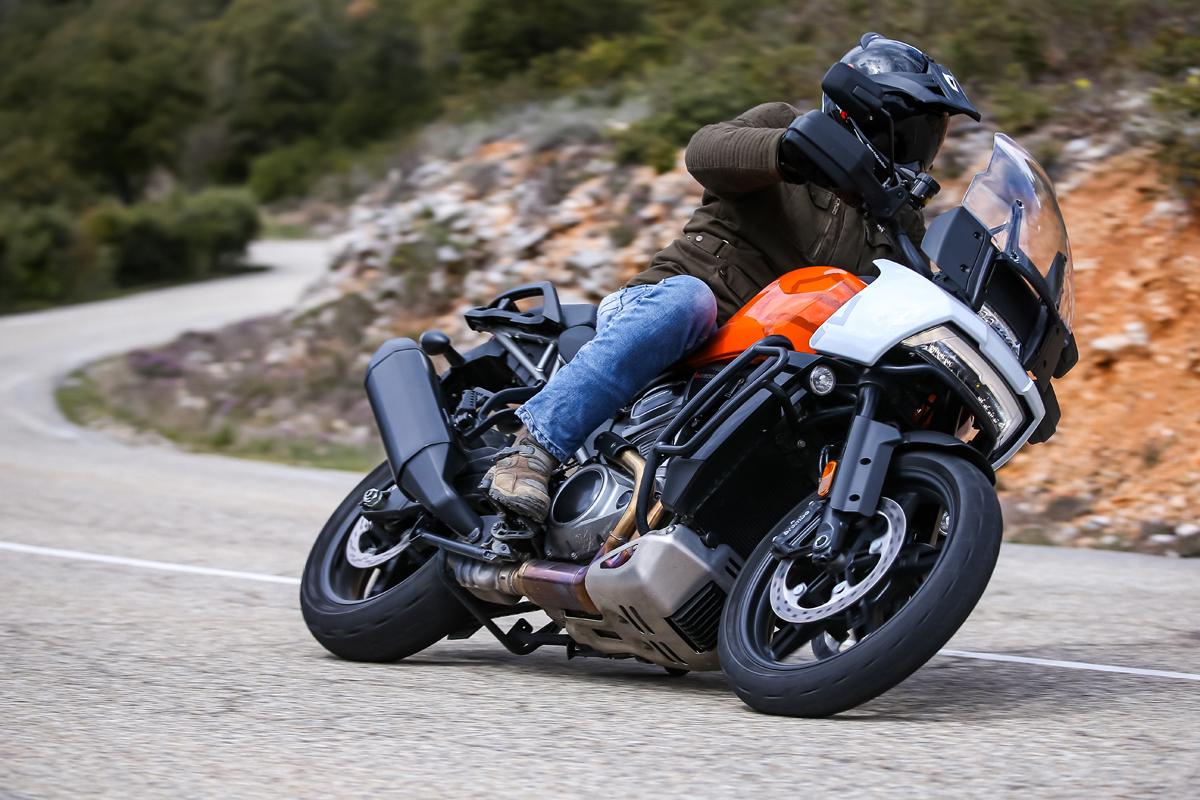
With 150 hp and a modern electronics package, can an American dual-sport machine threaten established adventure bikes from BMW, KTM, Honda and co.? Our man in Europe spent two days aboard the new Harley-Davidson Pan America 1250 Special, in the French region of Luberon, to find out.
Is the Pan America pretty? Ugly? Interesting? Just plain weird? I can’t really answer that question. But on the other hand, I’ve never considered the BMW GS to be a remarkable piece of design, and KTM’s Kiska-designed machines aren’t really to my taste.
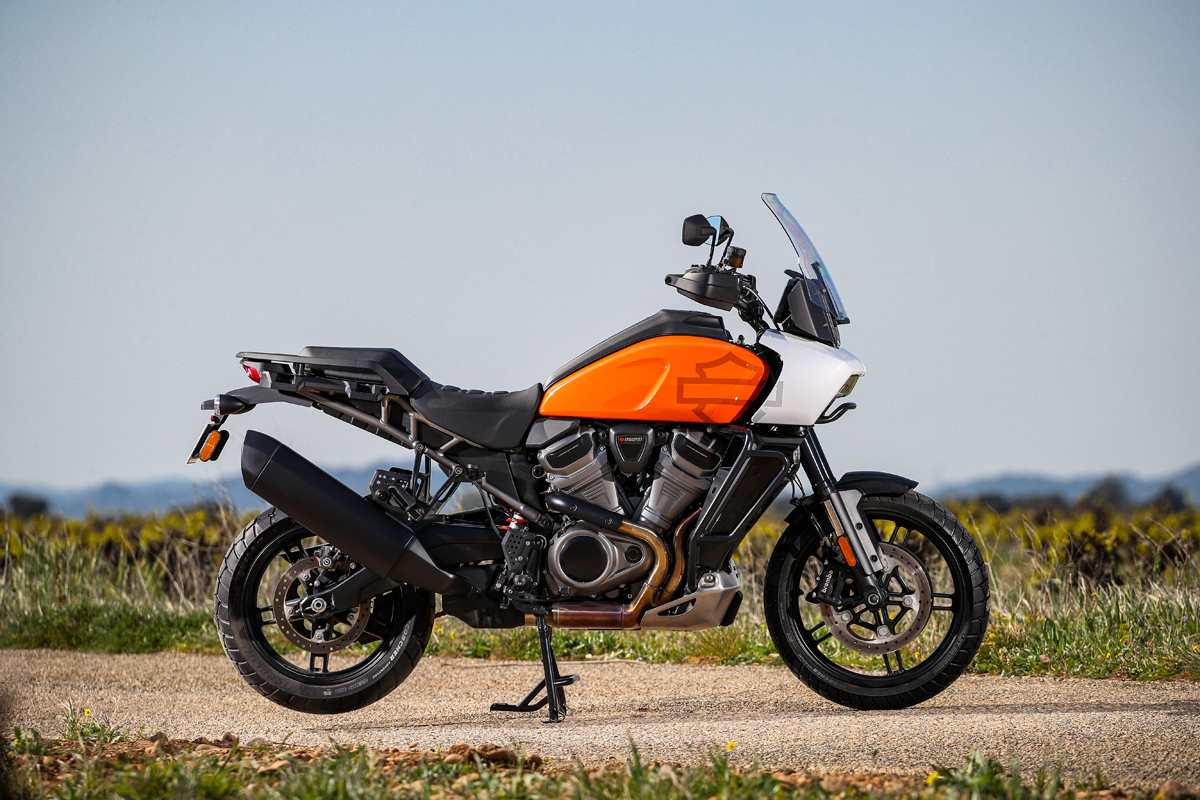
In fact, I’ve never considered big adventure bikes to be chefs d’oeuvre of motorcycle aesthetics. They have to deal with function over design, and that’s fine with me.
I had the chance to chat with Harley-Davidson’s lead designer, Brad Richards, at the 2019 EICMA motor show in Milan, Italy. Brad designed the Pan America, and is perfectly happy if you don’t like, but he did explain the thinking behind its design. Take the fuel tank and draw a line just underneath it—under that line is the mechanical section; above it is function and design.
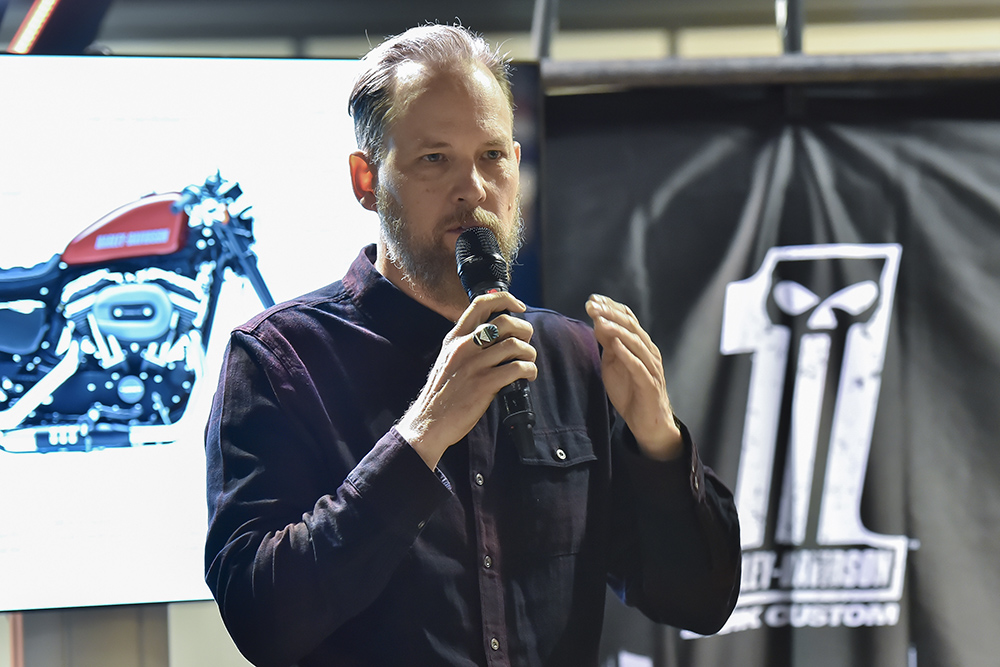
Richards wanted the Pan America’s visual identity to be very American: the front end, for instance, is a mix of a Road Glide ‘shark nose’ front end, with the visual impact of a Jeep’s radiator grill, enhanced by modern LED lights. At least the Pan America isn’t wrapped in weird plastic panels all over, nor does it have the same ‘duck bill’ that’s been part of dual-sport design since the 1988 Suzuki DR 750.
Love it or hate it, at least the Pan America has its own personality.
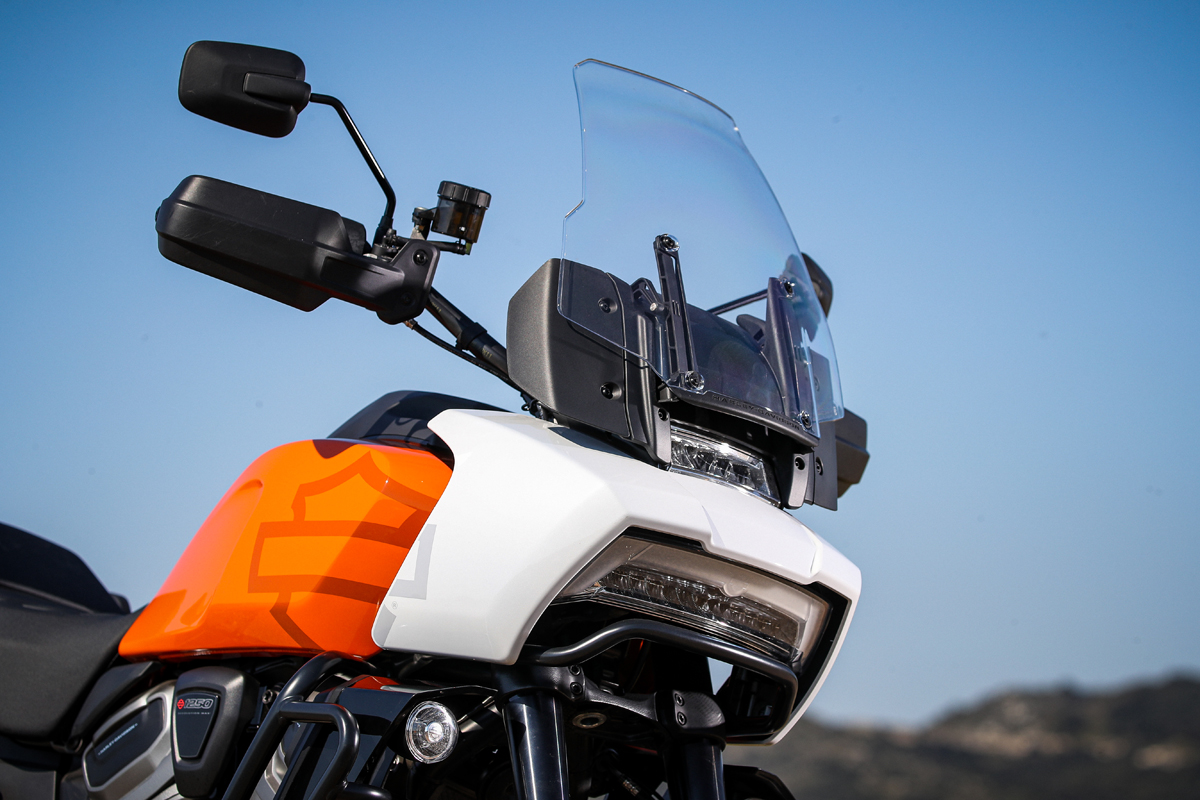
1.6 million kilometres of testing
The Motor Co. has developed a brand new engine, and no, it doesn’t make the archetypical ‘potato-potato’ sound. The 1,252 cc V-twin has been through more than 1,6 million kilometres of testing, half of them on off-road sections.
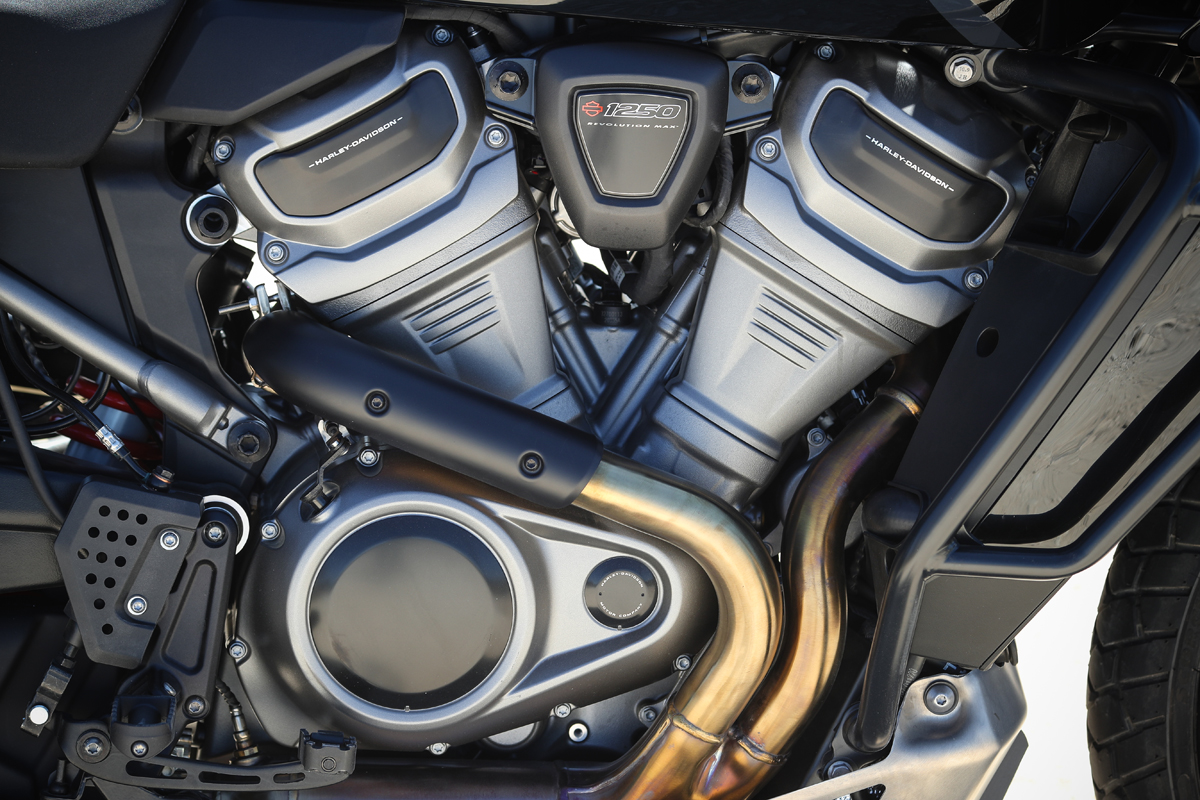
The technology is interesting, and so are the figures: with 150 hp, the liquid-cooled ‘Revolution Max’ engine is more powerful than BMW’s big boxer, but torque is a bit lower at 128 Nm. (The BMW GS makes 143 Nm, the Ducati Multistrada V4 makes 125 Nm.)
The tech department has been busy. The short stroke (105 x 72 mm) is unusual for a Harley, opened at 60° with a 90° firing order, and running with a twin spark system, 8 valves with hydraulic valve clearance, variable valve timing, and two countershafts for reducing vibrations. That sounds very good, but big miles-eaters might think twice, since the service intervals (8,000 km) seem comparatively short against the competition.

The Pan America’s engine is smooth and, at standstill, makes the sort of sound that you’d expect from Aprilia Mille or the Rotax 1125. It sounds better when you hear it passing by than when you’re on board, but the optional Screamin’ Eagle improves the soundtrack without being too loud. It also appears to be very smooth at low revs, with a fair amount of oomph from mid-range, depending on which engine map you’ve selected.
Full electronics package
As a modern machine, the Pan America 1250 comes with a full electronics package. Available engine modes include Rain (where the power delivery is limited to 110 hp), Road, Sport, Off-Road and Off-Road Plus. Throttle response and traction Control settings are different from one mode to the next, and the Pan America has different personalities depending on what you pick.
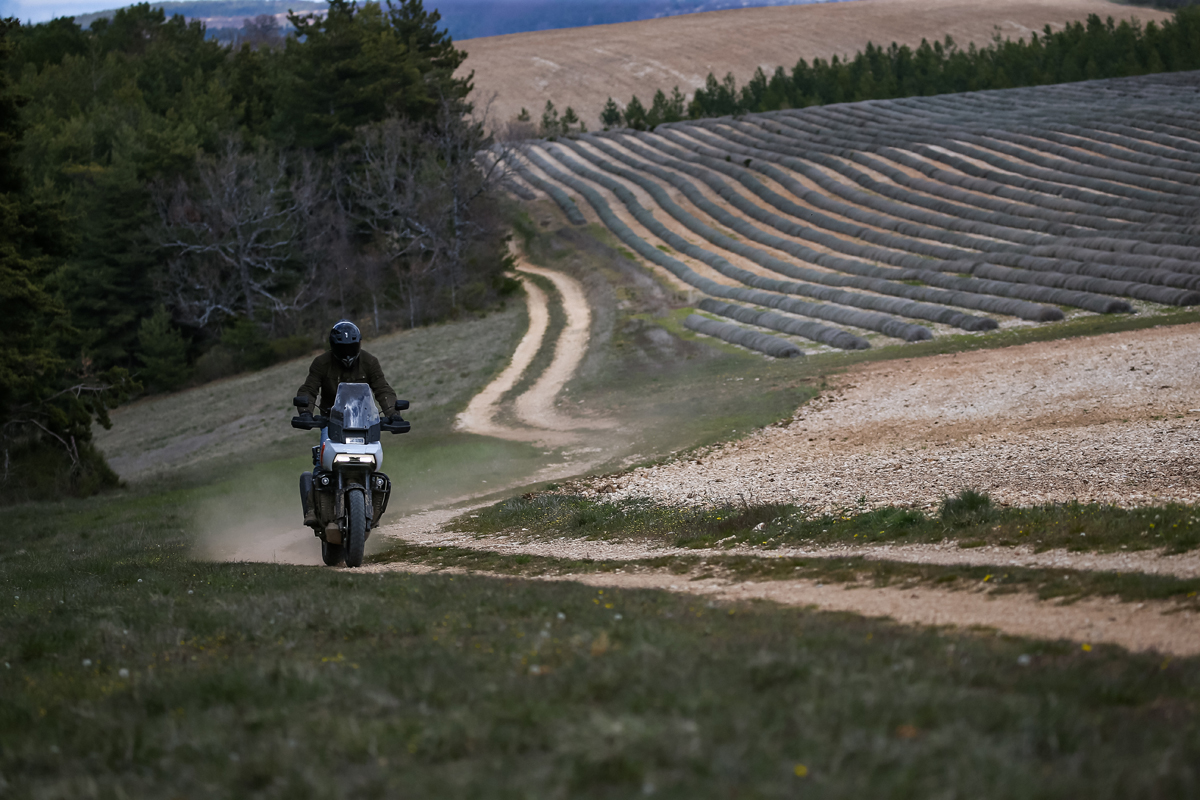
There are also two ‘user’ modes, where you can mix your own recipe. I quickly chose Sport mode, with the semi-electronic suspensions set to ‘comfort’ mode. And if you’re wondering about long off-road stretches, the ‘Off Road Plus’ mode allows the traction control and the ABS on the rear wheel to be deactivated.
The 6.8” colour and tilt-able TFT screen is easy to read and is more than stacked with info—although some bits of info were a bit too small for my old eyes. Besides that, the ergonomics are great, as the touchscreen and logical switchgear make for a great combo.
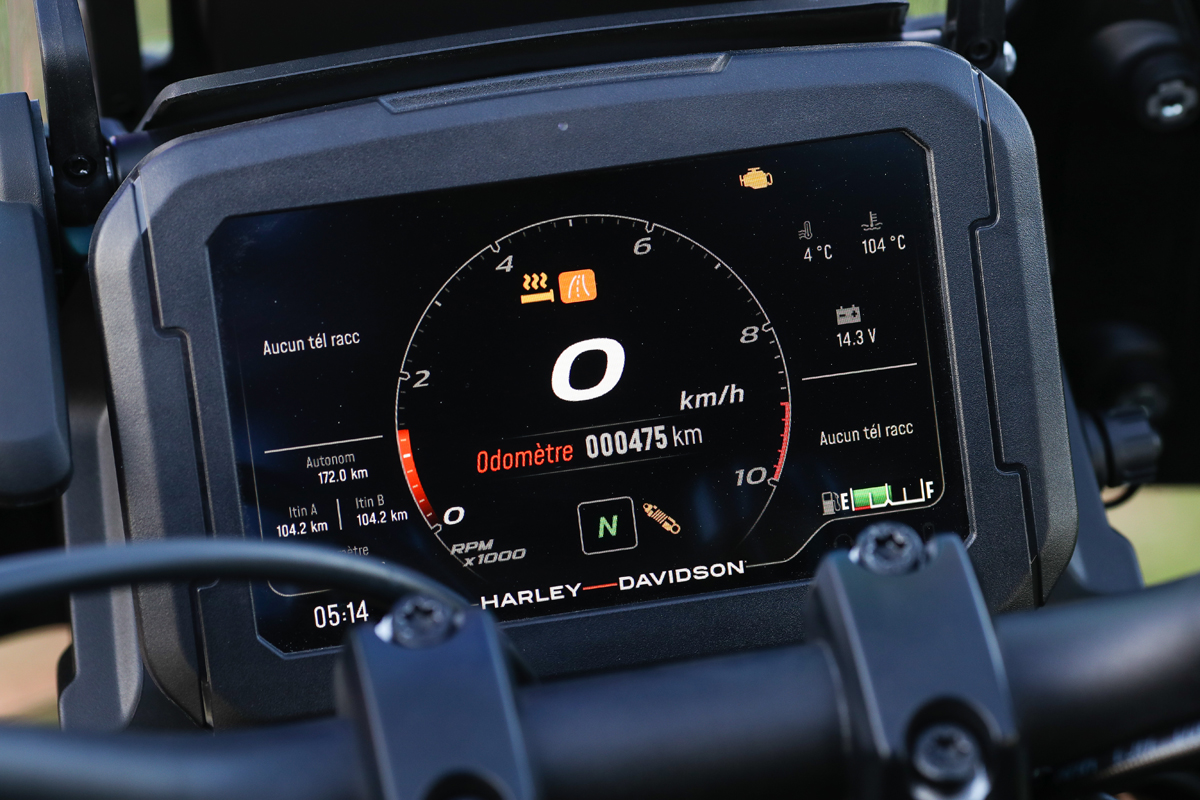
Another great function is Harley’s new ‘Adaptative Ride Height’ (ARH) system, which comes as an option on the Special model. When selected, the semi-electronic suspension works on the preload to reduce the seat height by 20 mm, making the Pan America’s seat height as low as 830 mm (instead of the normal 850 / 875 mm). A handy option for shorter riders.
Easy, fun, comfortable
When I saw the first pictures of the Pan America, it looked as big as half a Hummer to me. In reality, I’d say its dimensions are more or less in the vein of the Yamaha XTZ 1200… which means it’s more compact than a GS Adventure or a Multistrada Enduro. That’s good for city riding and parking the bike, while still offering a great level of comfort.
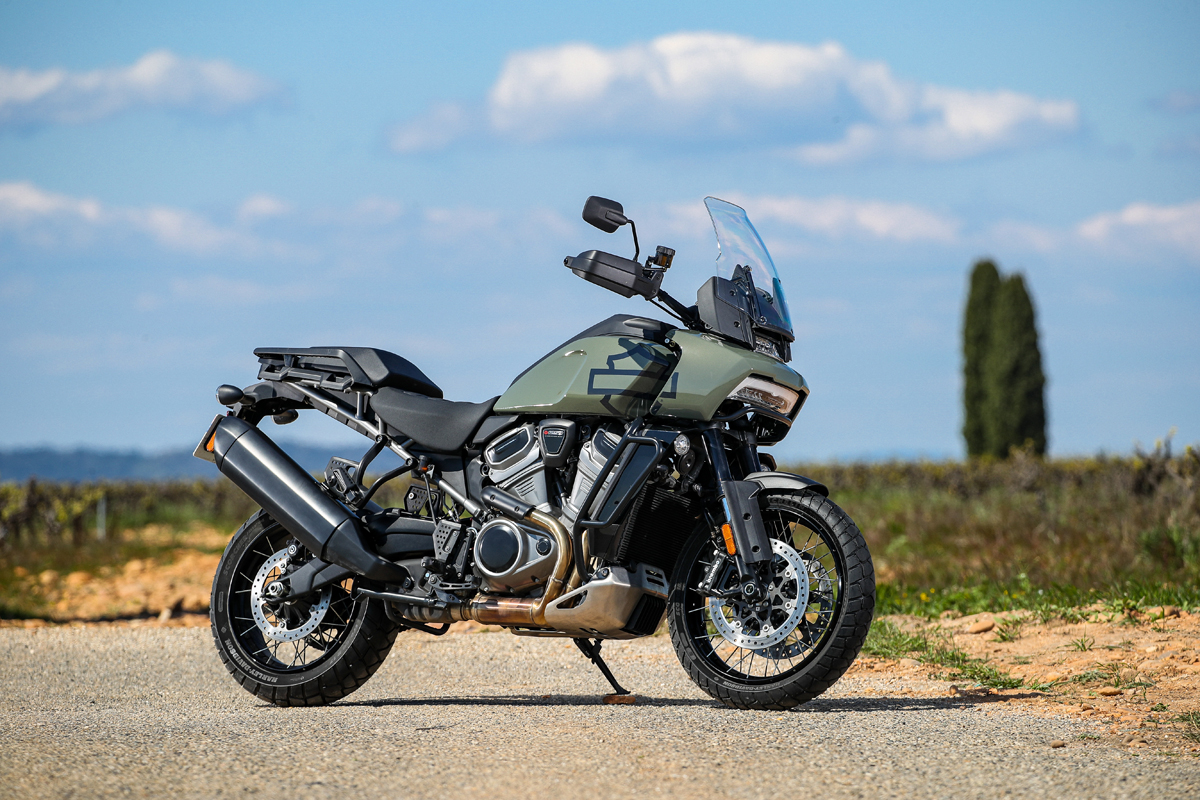
The riding position is perfectly natural and on par with what you expect from a dual-sport bike, and the fuel tank is not too wide. The windscreen is adjustable by hand with a 45 mm range; at 1,88 m tall I had some wind on the upper half of my helmet, but my shoulders were correctly protected on the open road. Hand guards and heated grips are also welcomed additions, as well as cruise control.
On the road, the Pan America has a very reliable front end—this is the kind of bike that makes you smile when comes to the twisties. The brand new Michelin Scorcher Adventure tyres are excellent and provide great grip and feedback. And the Brembo radial brakes deliver power and progressive feel, and don’t affect the bike’s handling when you drag them into a corner.
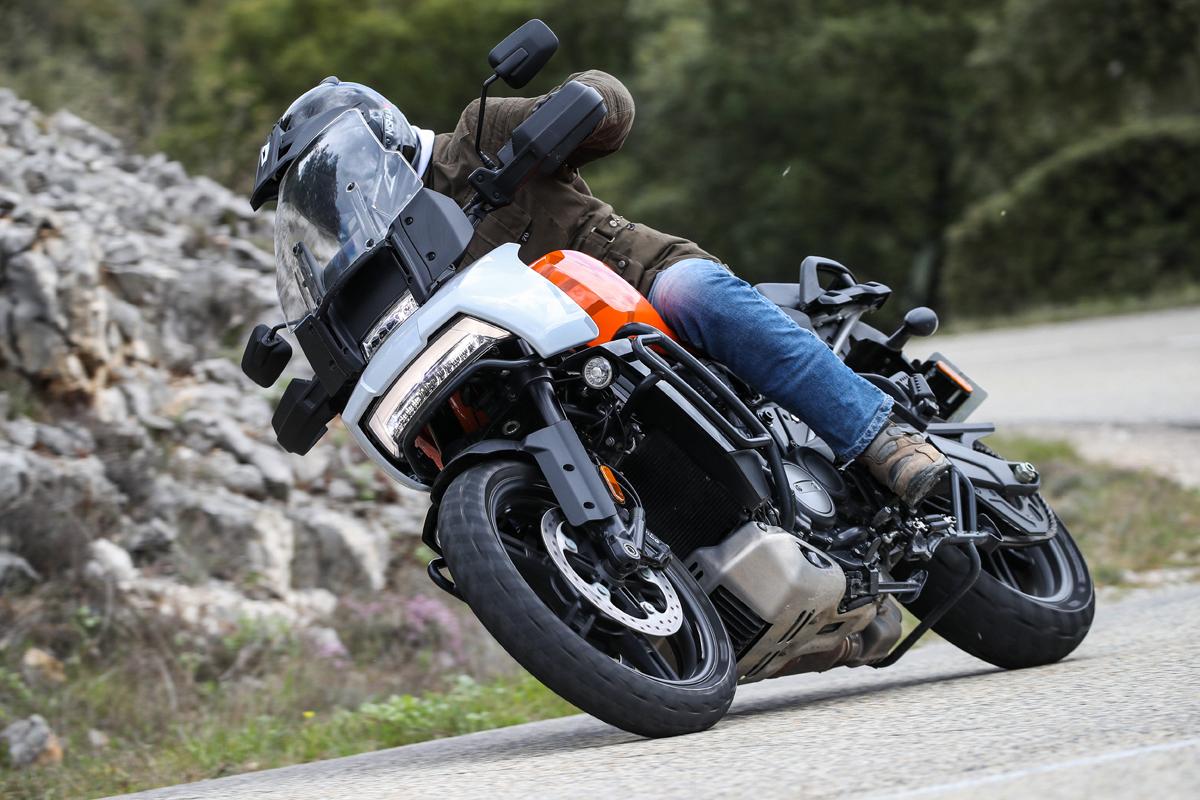
The chassis is exceptionally neutral and forgiving too. With a 42° lean angle right and left, you can ride hard without scratching the pegs all over the place. With a bit of riding skill, the Pan America will be a top mountain pass contender, with the 150 hp peaking tangibly in the zone between 6,500 and 9,000 rpm.
At a more sedate pace, the V2 engine relaxes at 4,000 rpm at 110 km/h in sixth gear, with a low level of vibration. The seat and suspension are on the plush side, so there’s no doubt that the Pan America will make a great tourer.
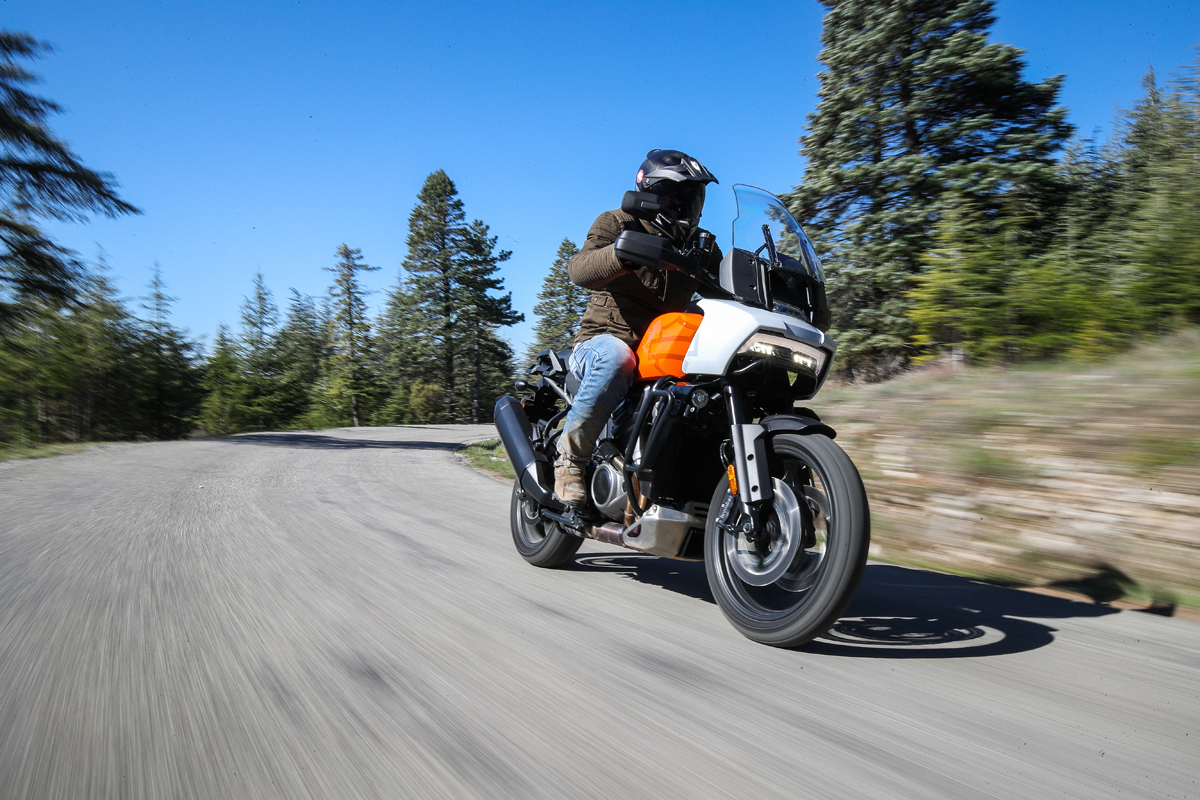
Off the beaten track
As we get around Mont Ventoux, of which the 1910 meters-above-sea-level peak can be seen from kilometres away, our guide decides to take us off-road through pine tree forest and lavender fields. This is one more Pan American magic trick—getting us close to this great scenery.
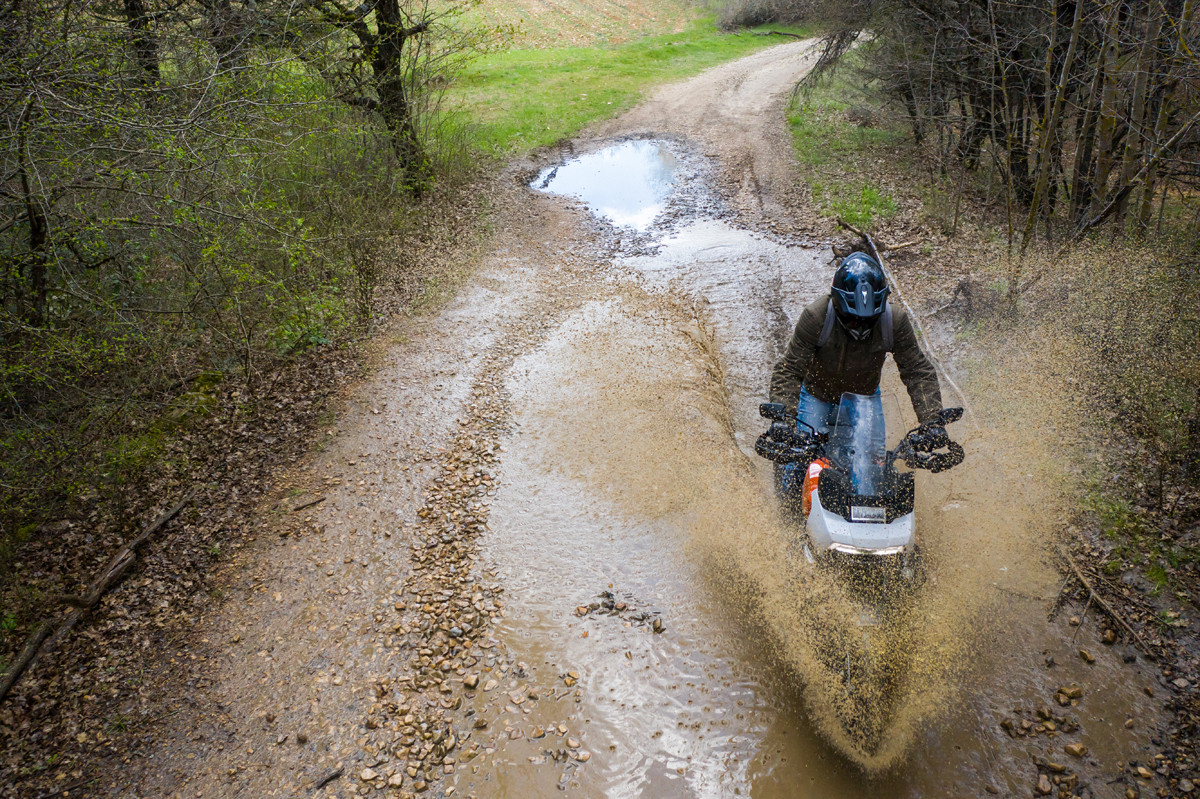
We had to make a small stop to put the bike into ‘Off-road’ mode, and even ‘Off-road Plus’ for some dirt riders, where the ABS is disengaged on the rear wheel and the traction control is off. Since my South African nickname is ‘Fearless Flippie,’ I went all in!
I found the standing riding position very comfortable, and didn’t feel the need for handlebar risers. And the rather narrow fuel tank helps a lot for control. I had one close call when my Forma off-road boot slipped away from foot peg—but it was my fault for not removing the rubber insert that makes it more comfortable on the open road.
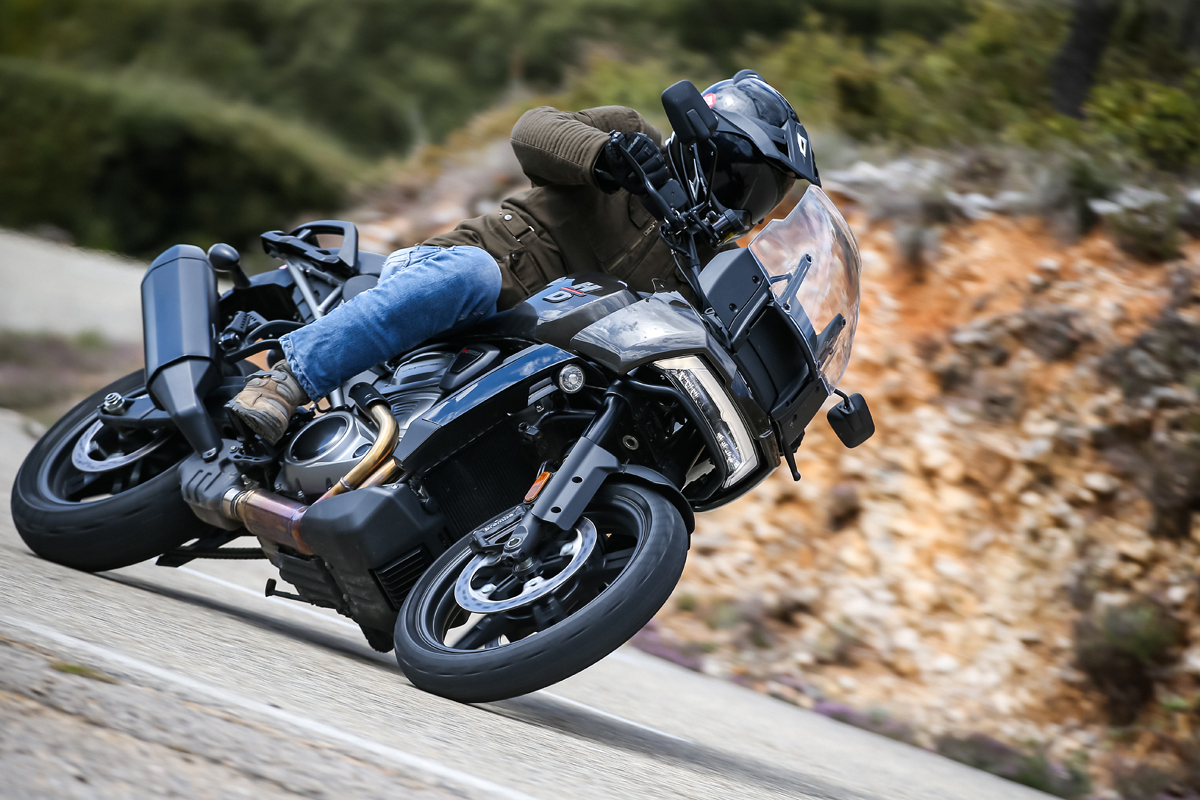
A couple of seconds later I was trashing the throttle, to discover the perfect stability of the Pan America, and the great composure of the suspension. The rather linear personality of the V-twin engine also helps for subtle traction and acceleration control. While I was missing a quick-shifter on the road (I wasn’t actually missing it, but since the competition offers it, it feels like it’s missing), it was possible to gear up without using the clutch on the gravel.
My only concern is seeing the voltage regulator grill quite exposed in the middle of the aluminium bash plate… will the Pan America’s 210 mm ground clearance be enough in rocky sections?
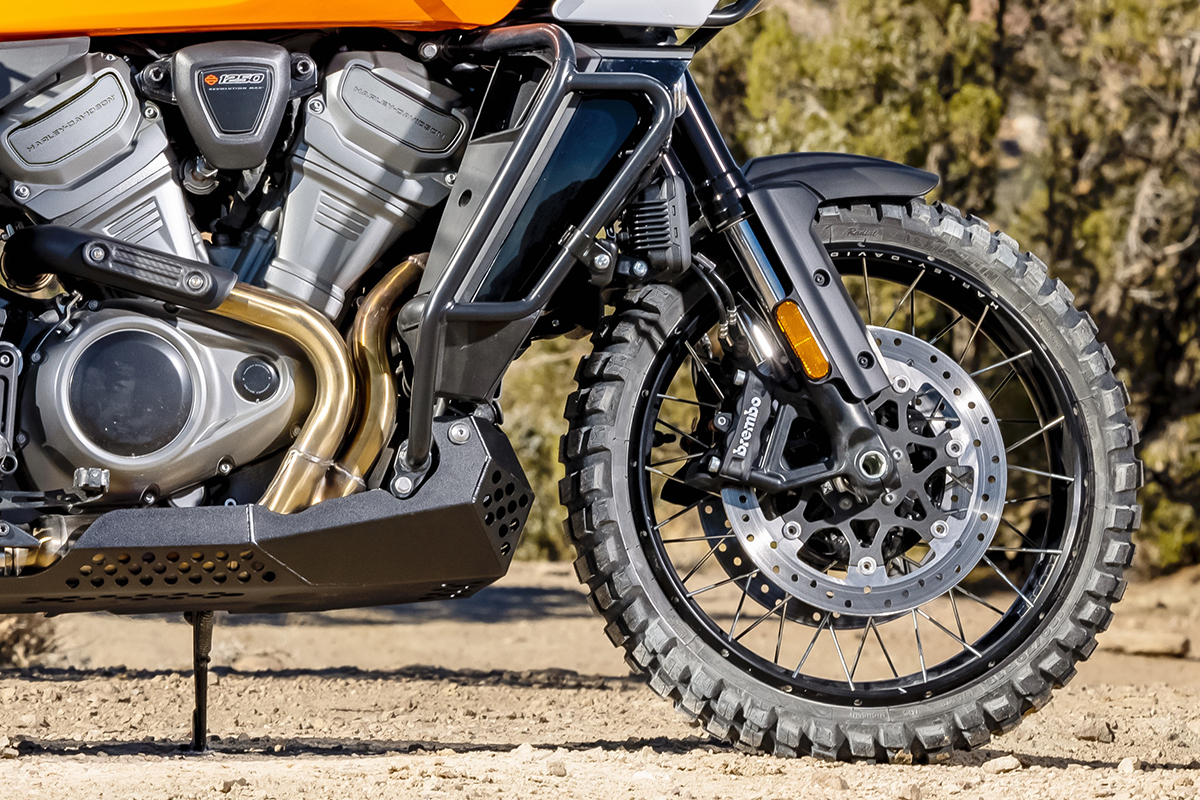
And what about the ‘standard’ version?
I also had the chance to ride the standard version of the Pan America 1250, which appears to be a bargain at R310,900 when compared to the R352,800 of the Special. Of course, you’ll then have to deal with a lower level of equipment.
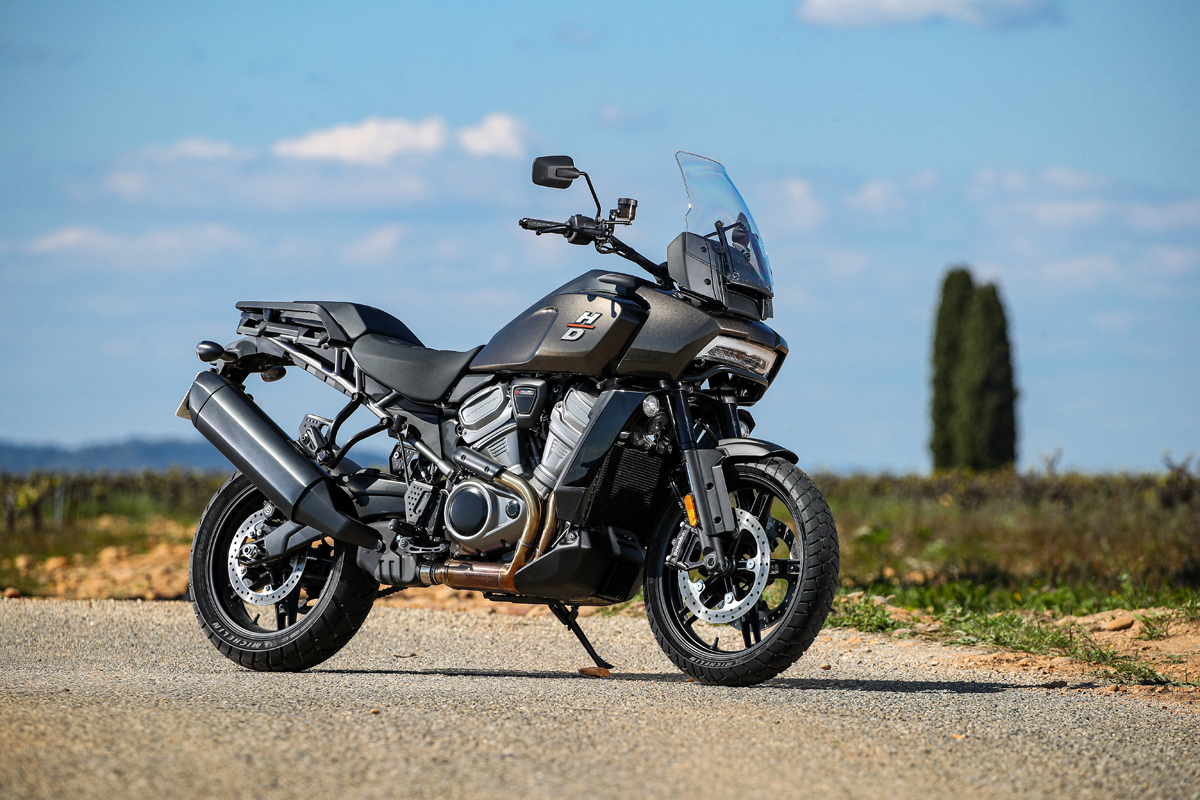
The standard Pan America does not feature the adaptive suspension system, cornering lights, hand guards, heated grips, crash bars, aluminium skid plate, centre stand and a few more small items. You also can’t spec it with factory options, like spoked wheels or the ARH system. There are less colour choices too, and the tank logo is an actual badge rather than the painted logo on the Special.
There is one up side: if you go for the standard version, you’ll save R40,000 and 15 kilos. Want another? The standard version doesn’t have a steering damper, and that makes the front end feel much lighter at small and average speeds. It’s the kind of feeling that makes us love trail bikes in the first place, because they feel more nimble and intuitive to ride. So ultimately, the standard version has a lighter and more fun front end.
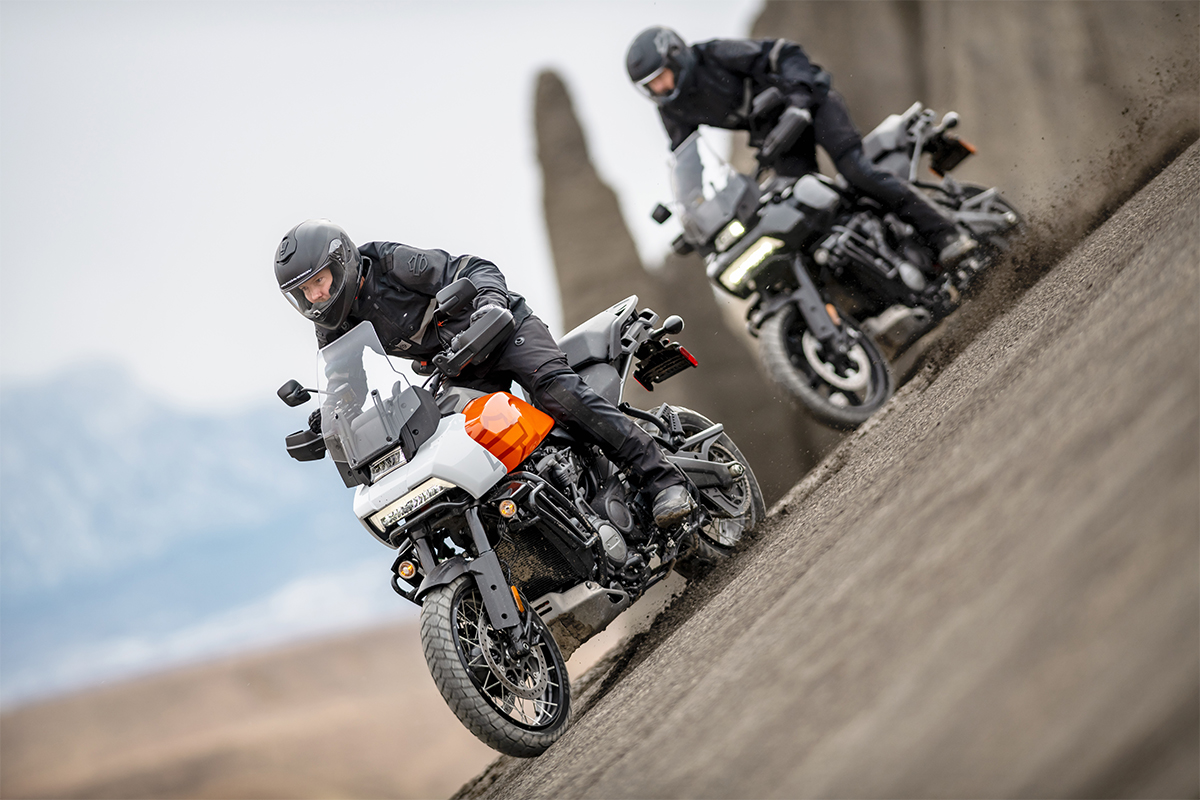
Will you miss the steering damper? It’s hard to say, because, during two days of riding, which included some road sessions at a rather fast pace (since one of our marshals was an FIM Endurance world champion), as well as a fair time of off-road, we never experienced any sort of head shake from the Special. So it clearly has some effect.
The Special’s semi-electronic suspension is versatile, delivering sporty road-holding in ‘Sport’ mode and softer characteristics off-road, and can handle a pillion and luggage equally well—all by pressing a button. But on the other hand, if your riding is more or less the same most of the time, the Showa equipment on the standard Pan America 1250 is more than adequate.
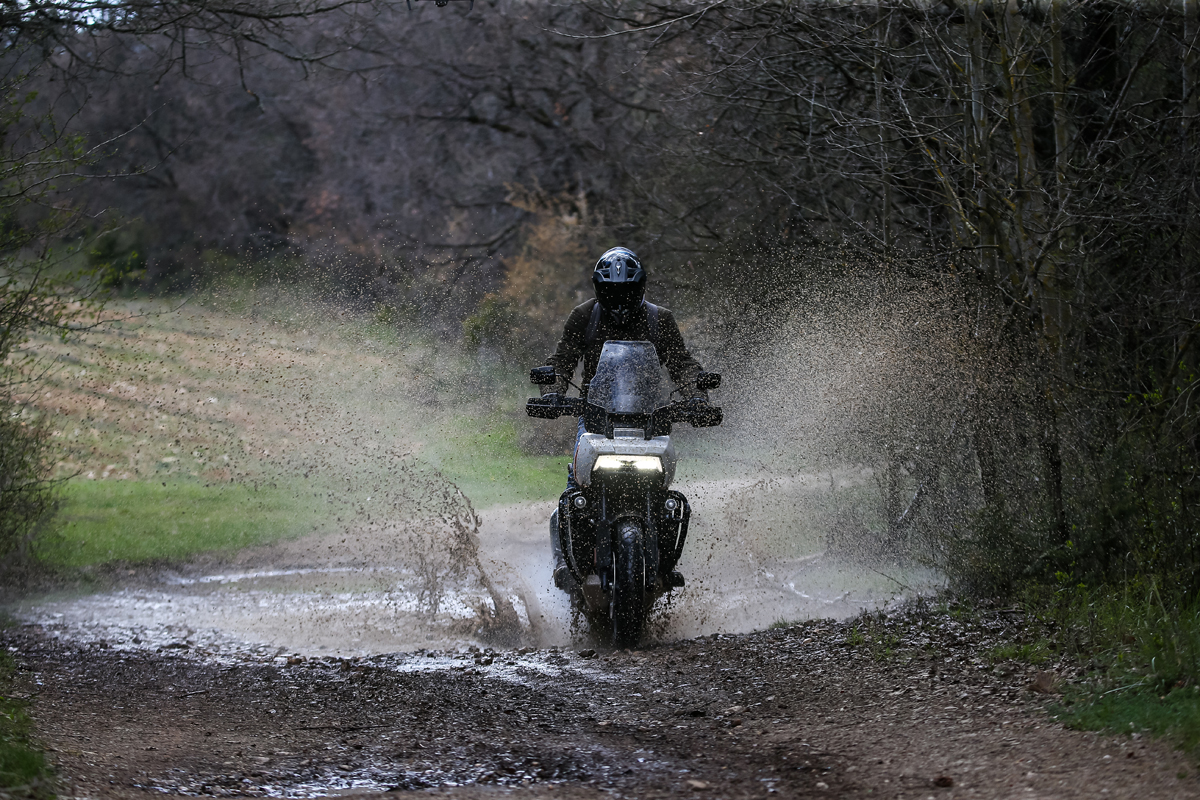
For my money, I’d choose the standard issue Pan Am with two extras: hand guards and heated grips.
Overall, I reckon the American machine offers one of the best fun-for-Rands and touring packages in its class. One thing’s for sure: it’s worth a test ride.
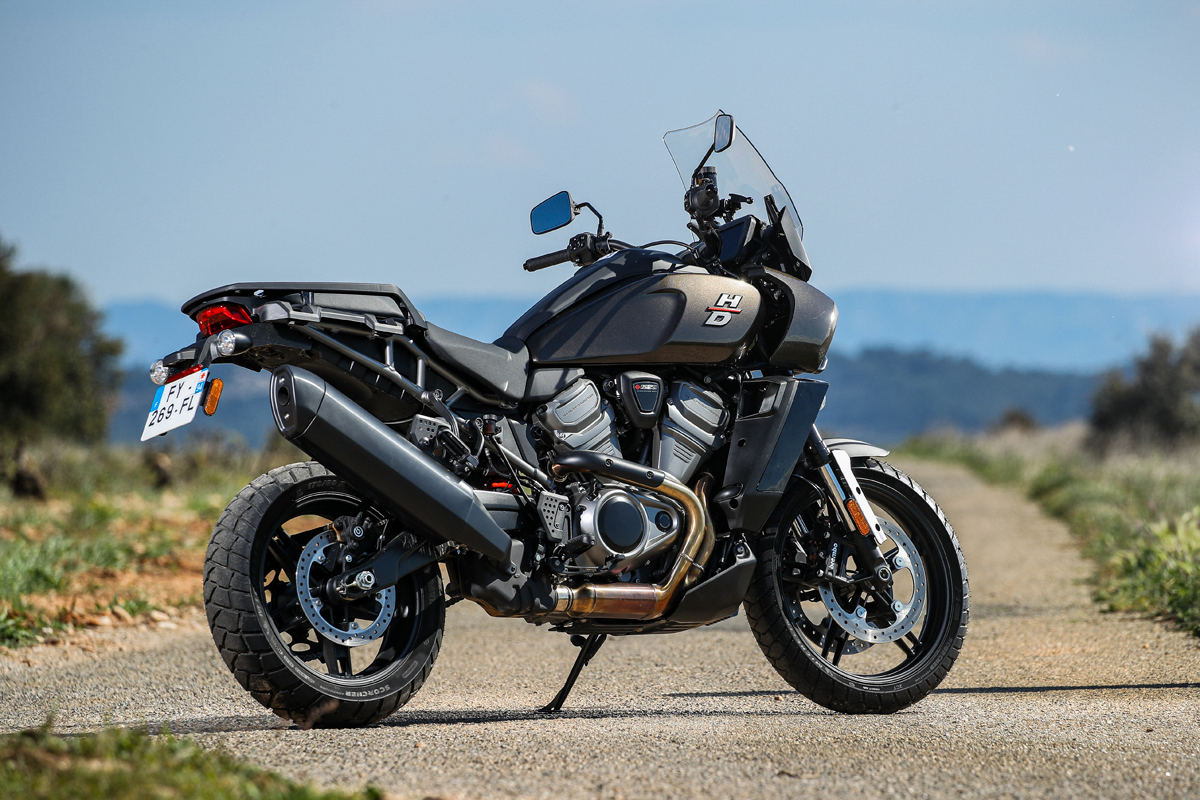
For more info contact: www.roc-hd.co.za





